It was time to break out the giant ribbon-cutting scissors in Azerbaijan this week with the official public opening of the Heydar Aliyev Center – the country’s premier cultural events venue in the capital Baku. Zaha Hadid Architects were selected as the winner of the 2007 design competition; the former Soviet state is on a mission to develop economically and aesthetically, and Hadid’s typically space-age vision is a far cry from the Soviet Modernist architecture prevalent in Baku. Often maligned for a disregard of scale and context (see the studio’s recent troubles in Tokyo), here the Heydar Aliyev Center represents a new-thinking, a triumph of imagination over function. This is arguably Zaha Hadid’s finest work to date.
The front of the building rises and falls like a sine wave – a ripple in the fabric of the plaza around it and a way to create continuity between the exterior public space and the interior. This waveform is an extension, or amplification, of the surrounding undulations and folds. The building’s skin was another exercise in continuity. A “space frame” system, creating large column-free areas inside, was used to hold a structure of fibreglass-reinforced concrete panels. This skin was made as homogeneous as possible to create the building’s flowing effect, which in turn takes its cue from the curvature of historical Islamic architecture and the shape of calligraphy and ornamental patterns.
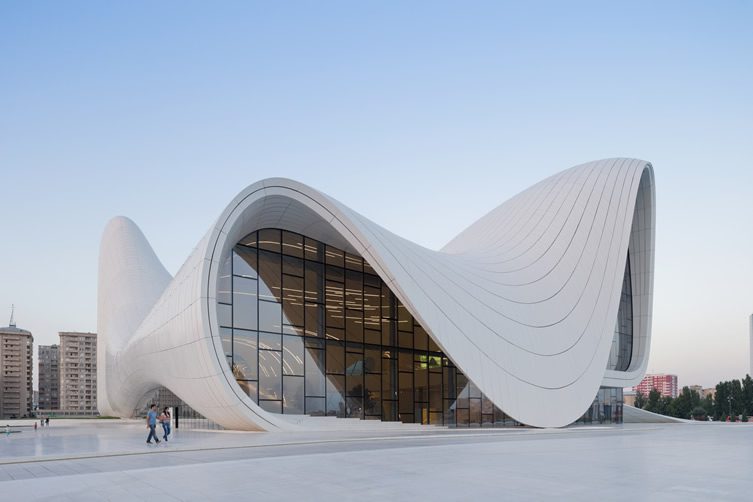
Photo © Iwan Baan
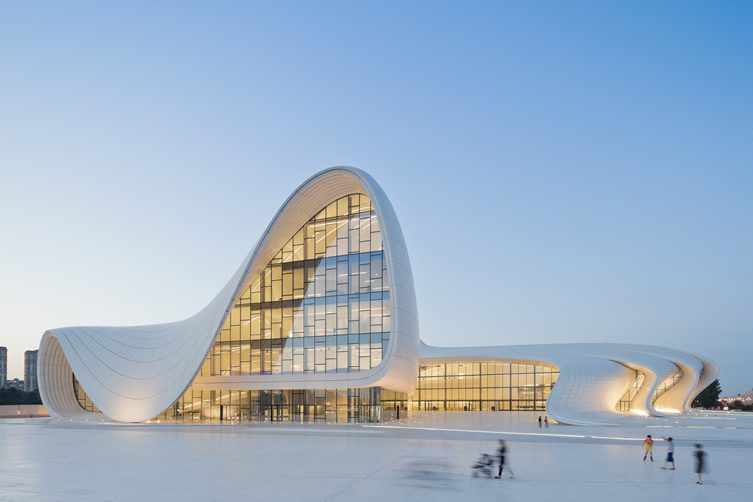
Photo © Iwan Baan
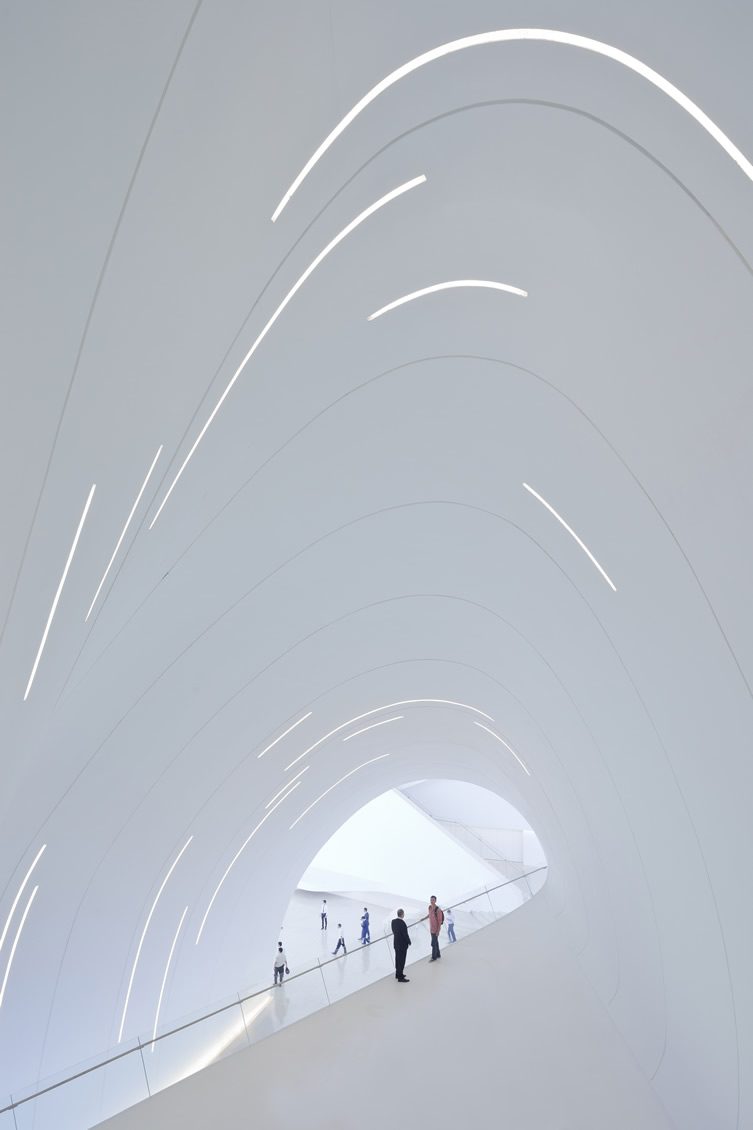
Photo © Iwan Baan
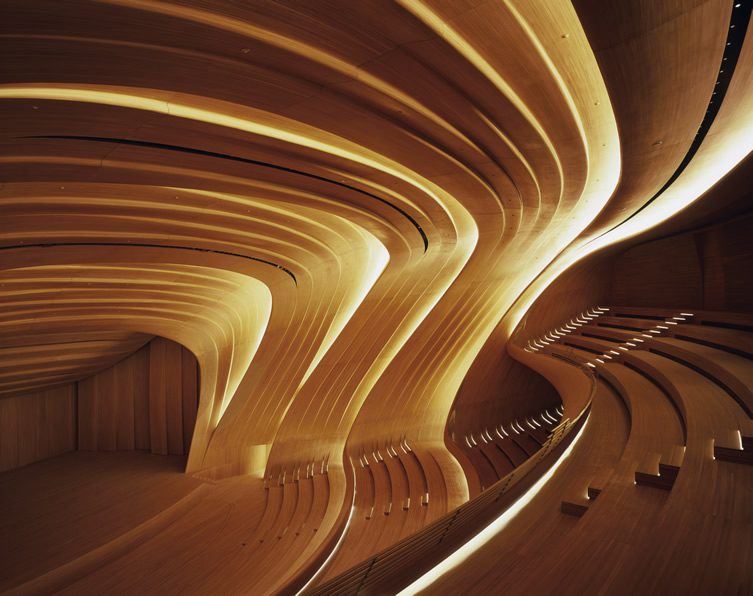
Photo © Helene Binet
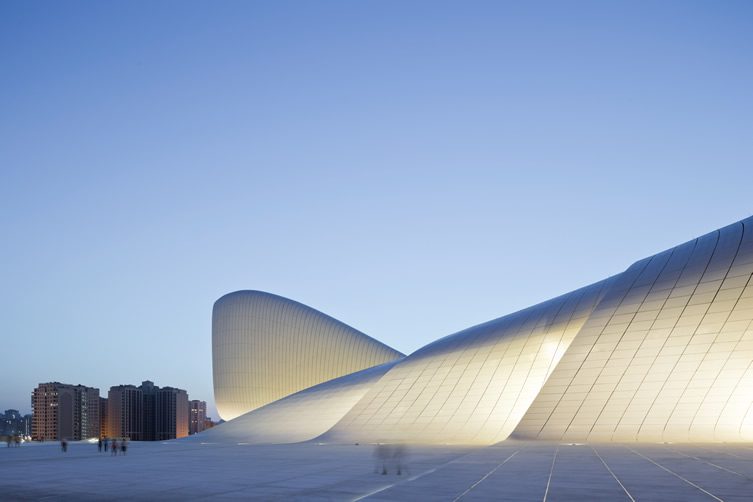
Photo © Iwan Baan
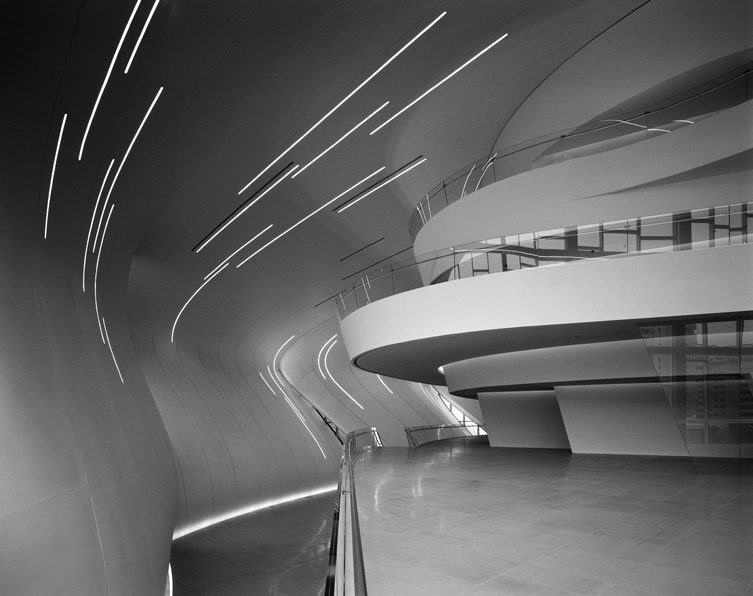
Photo © Helene Binet
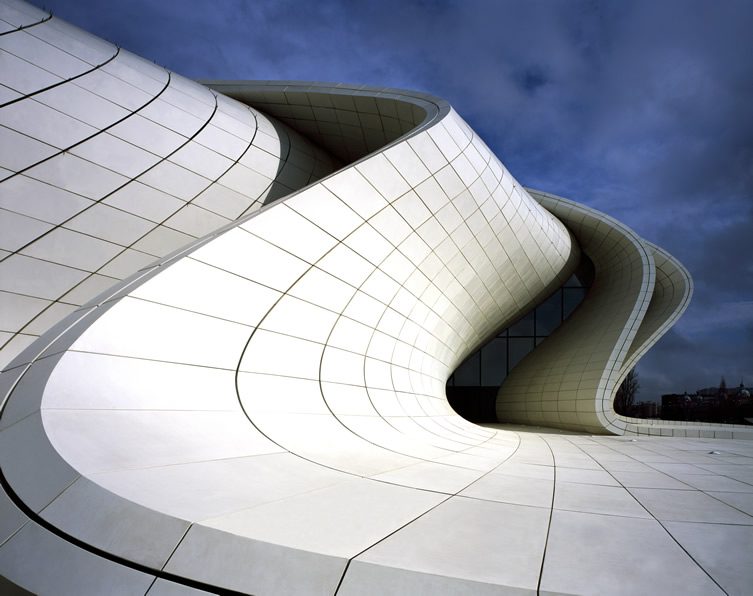
Photo © Helene Binet
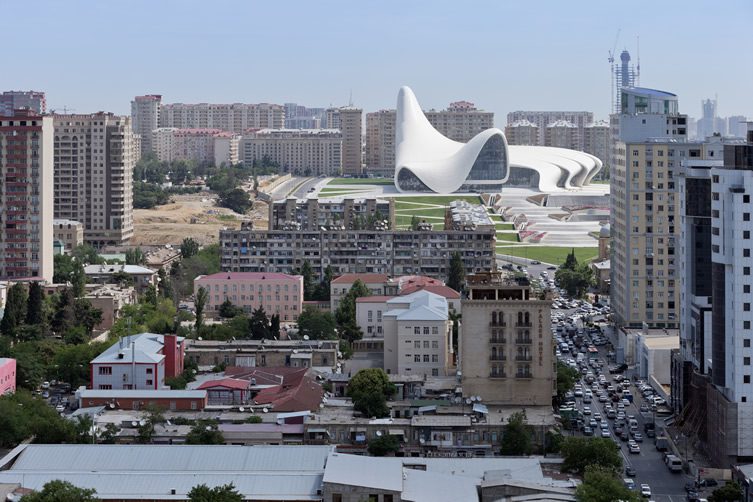
Photo © Iwan Baan





